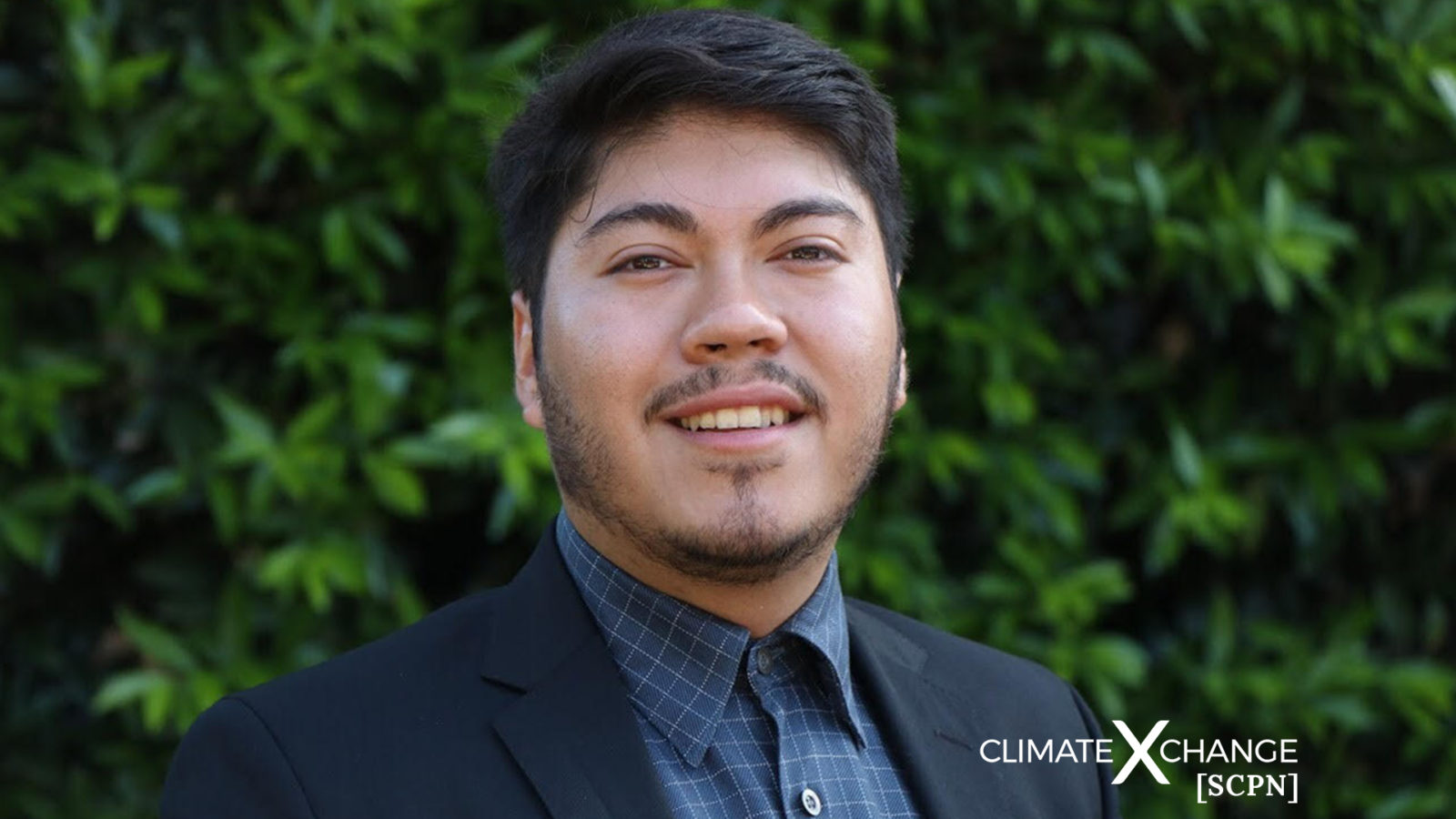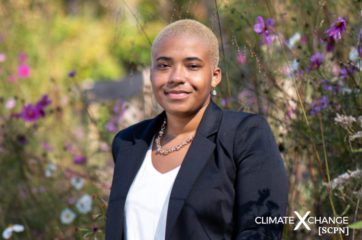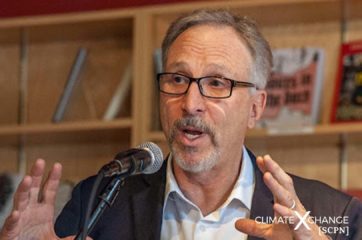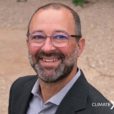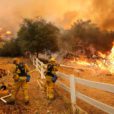All across the country, members of our State Carbon Pricing Network (SCPN) are fighting to make an impact on climate change in their communities. We have individuals in our Network from all 50 states, each experiencing climate change differently in their local areas and finding unique solutions to build resiliency efforts.
Edgar Barraza is an Environmental Justice and Land Use Associate at the San Francisco Public Utilities Commission (SFPUC). His work involves integrating environmental justice and racial equity in the agency’s water, power, and sewer operations. Importantly, his role is to support the SFPUC Environmental Justice policy through its community benefits program.
Ava Gallo
Okay, so I’m so glad that we could do this. I’m so excited to hear more about your work. Could you start by telling me a little bit more about your background.
Edgar Barraza
I originally grew up in LA in a small city called Pico Rivera next to the city of Whittier. That’s also bordering East LA, which is a big environmental justice community. On the CalEnviroScreen, which is a policy tool that we use to identify EJ communities, it’s one of the communities with the most concentrated air pollution. So that is the community I grew up in. Opportunities there were very limited. I grew up in a very low-income family, so access to college and this professional life seemed totally out of reach.
It wasn’t until I started getting empowered by professors and teachers at my high school when I started to push myself forward, and I applied to go to college at San Francisco State University. There I studied Environmental Studies with a focus on Social Justice and Policy. In those classes, I heard a lot of stories on how cities made decisions where people of color never really got to benefit from governmental processes and laws. That’s what really fueled my passion to work on studying how undocumented communities are extremely underprotected from environmental impacts, whether it’s from pesticide pollution and working in the fields to not being protected from deportation. It really fueled my passion to understand the inequities within my community.
So I realized that working in policy and government is the best way to uplift and protect my community. After not just seeing, but learning more about the roots of my family and all those barriers really pushed me forward. One of the first internships I decided to take on was to become an immigation legal attorney assistant at a nonprofit in the heart of San Francisco, which main focus was to provide legal assistance to low-income, undocumented folks. That way I got to ground-truth myself in the community and understand what the Latino community needs in San Francisco.
After ground truthing and being more involved in the community, I decided to take those learning lessons and apply them to a government space. And I did that strategically, because I didn’t want to enter the government world thinking I knew what was best for the community.
So my first government internship was at the San Francisco Department of Environment. I was an Energy Efficiency Intern and helped to implement the Energy Efficiency ordinance, which was part of their efforts to start decarbonizing the City of San Francisco and become more eco-friendly. I really loved it, and I got to work with the Latino community again there and show them all the amazing incentives to switch to fluorescent light bulbs to LED light bulbs and all the other incentives the government programs have to offer. I was being very strategic to focus on the Latino communities, because the language and cultural barriers for them to access these incentives were so high.
One thing I noticed about these energy efficiency programs and policies was that a lot of the time large corporations got to receive this money first and a lot of small businesses, usually businesses of color, usually got the breadcrumbs of this money. That for me was one of the inequities that drove me further to continue this work.
The next opportunity I had was being a CivicSpark fellow, which aimed to address climate resiliency. It’s a state-level program administered by the Office of Research and Planning from Governor Newsom’s office. I was placed to work at the City of Emeryville to build an electrification plan to decarbonize municipal buildings and build resilient buildings for its community. I also wanted to apply an environmental and racial justice lens. What does it mean to electrify and decarbonize through an equitable process?
So I started diving deeper to see the inequities. I found out that when investing into large energy infrastructure whether it be solar panels, all-electric HVAC systems, or clean technologies, a lot of time large green companies, particularly owned by white men, get to reap these benefits of government dollars, while businesses of color don’t get to benefit from these great government contracts. I was still learning how these inequities are so ingrained in these government decision making processes. I wanted to find ways for governments to stop perpetuating those racial inequities and find ways to continue promoting a decarbonized, equitable future at the same time.
All that work eventually landed me my dream job here at the San Francisco Public Utilities Commission. I was so so happy to land here. I was actually eyeing this job and the person who previously had this role who is now my boss. This was a full-time position to really implement environmental justice across a utility. The enterprises provide power for all the city of San Francisco and municipal buildings, provide drinking water, which comes from our Hetch Hetchy Dam, and waste water services. We have a conglomerate of public services we provide and also a huge area of where we operate.
My role is to implement and further institutionalize environmental justice principles and to make sure that we don’t disproportionately impact communities of color or environmental justice communities. That’s how I got from being from an environmental justice community in LA and to being in San Francisco and getting to undue some of the historical wrongs.
Ava Gallo
That’s so great. Thank you for that background. I think that it’s really great as you said in the beginning that you wanted to start working in these communities to try and understand their perspective before going into government. I feel like a lot of people skip that really important step. So building off that, I wonder what advice you would give to people trying to advance racial equity goals in a government role or in mainstream environmental organizations.
Edgar Barraza
For me, all of my mentors and environmental justice champions that I follow, they all have this systematic path of how they get into government. They really understand the community and get involved within the nonprofit or community organizing space. That’s a really great way to ground truth yourself in the community, and then move into the government spaces.
Another thing that I always have to be aware of is: racial justice looks different to all communities. But one thing that is always similar is the end goal of achieving a just and equitable society. When government officials are trying to achieve environmental justice they go from the agency perspective. When the community tries to advance environmental justice they go from the community perspective. Oftentimes these two items are separate, and there is very little communication between them. So my advice would be to make sure that those working in the government space are always engaging the community and always understanding what they want and uplifting their voices. They need to see how they can merge what environmental justice looks like for the community and marrying them together. Oftentimes people who work in government get uplifted to a decision making power to make environmentally just decisions but if they are not approved by the community then they are not actually real environmental justice goals, they are just whatever we think that is. That’s my advice.
Ava Gallo
Great. I think that is super important. Mainstream environmental organizations are really starting to reckon with their history of not including people of color and environmental justice communities in the forefront of their work. Our organization also is really thinking through this. In your opinion, how would you describe how racial justice and environmental/climate justice interact?
Edgar Barraza
In the early 1900s, environmentalism started with a lot of conservationists who wanted to preserve pieces of land. In California, we have leaders like John Muir and others who really wanted to preserve the land; however, they did that in a way that was discriminatory to indigenous folks and practiced eugenics. A lot of times environment organizations, like the Sierra Club, uplift those historical leaders such as John Muir, and have a long history of perpetuating white supremacy. These environmental organizations might not explicitly practice white supremacy, but they get their history, knowledge, and foundation from white supremacy. I think it’s really important to acknowledge that past and rectify those wrongs.
Climate, environmental, and racial justice are separate ideas, but they all have ways that they overlap with each other. I’m still trying to learn this too. My role is specifically on environmental justice where we focus on uplifting communities who have borne the burdens of environmental inequities. But on a larger scope, when we talk about racial justice, we are talking about everyone who has felt the impact of racial inequity which is not as direct as environmental justice, but it is still connected.
I want to connect this back to forms of police brutality. Communities who are overpoliced are the same as EJ communities. That is how they really overlap with each other. We have forms of government violence from a racial justice component that is additionally harming communities that are already exposed to pollution and other environmental inequities. That is how they are overlapping.
On top of those things, now we have a future of climate exacerbation where we have extreme hot weather events and extremely cold winters, and those are just going to make existing conditions of historical racist and environmentally unequal policies worse. They are all interconnected, but they all have their different issues.
Ava Gallo
I definitely agree. It can get really complicated, but I think there are more overlaps than people think. Those are becoming more clear in this year and the crises we are facing on multiple fronts. I want to pivot a bit to talk more specifically about the work you do. Could you talk about any particular projects that you are most proud of accomplishing in your current job?
Edgar Barraza
One of the biggest accomplishments was the development of an environmental justice training for our CleanPowerSF program. CleanPowerSF is a community choice aggregate that is engulfed within our agency. We provide clean renewable energy for the entire city.
One of the most successful things was developing a thorough environmental justice training to educate all the folks in that program on what it means to integrate environmental justice into their everyday work and making sure that all their operations and practices are vetted through a strategic environmental justice lens so that we don’t advance any forms of inequities.
So within that training, I developed a policy tool where there is a checklist of questions to identify who benefits and who burdens and where we can eliminate burdens. I used that as one of my workshops to teach people in that program.
Eventually that policy tool was abbreviated and published by the San Francisco Human Rights Commission as a policy tool to think about environmental justice and racial equity. That was one of my biggest achievements where I got to develop this training and tools, and it got shared with the rest of the world. I was super excited about that. I can share with you that link if you are interested! That will definitely leave an impact on the city and hopefully a tool for other cities to utilize and address environmental inequities in their own governments.
Ava Gallo
That sounds like a really great tool that organizations all over will use in the future. I’m really interested in looking at it now! I want to wrap up a little bit and ask how have you gained inspiration from advocates in other states either through the State Climate Policy Network at Climate XChange or other interactions with people doing work in other states?
Edgar Barraza
There are two leaders that I follow. I’m not sure if you know her, but her name is Berta Cáceres. She was an indigenous environmental justice activist in Honduras. She worked to stop a huge hydro power plant being built on indigenous land. She organized her community and eventually defeated the construction of the plant that was going to destroy their drinking water access and their land. It was amazing.
A couple months later, she was assassinated in her home. It was really horrifying. But for me, her legacy did not stop there. She ended up winning the Goldman Environmental Prize in San Francisco and was well awarded for her activism and bravery. Her legacy still continues on and inspires people in Honduras to rise up against environmental degradation and be the new generation of environmental justice champions. On top of being faced with death threats people are still moving forward, and I am so privileged to do this work and not have to face death threats. So she’s one of my inspirations. I really recommend you look into her.
I actually draw all my inspiration from women of color. It’s just something I’m really passionate about. The other woman’s name is Maxima Acuna. She was an indigenous farmer holding this large piece of land in Peru. Another large gold mining company wanted to evacuate her from her home and forcibly take her property. She said no several times, and was kidnapped and beaten. Amazing women lawyers and advocates came to her aid to defeat the company from taking her land.
It just inspires me all the time. These horrible things happen to indigenous women that I personally relate to because my parents are both from Mexico, and I have a lot of indigenous/mestizo cultural heritage. So that is truly important to me. I look up to a lot of indigenous women who know that they are going to be faced with harmful energy, but they are still going to kick ass. I’m so excited to be a part of this movement and to continue their work to take the torch and move it forward to the next generation.
Ava Gallo
So in this political moment, it can be easy to get discouraged, so you draw strength from the stories of these women?
Edgar Barraza
Yes.
Ava Gallo
I will definitely look into them and read more about their stories. They sound really amazing. So I don’t want to take too much more of your time, but thank you so much for speaking with me today. I could honestly talk about your work all day long. Thank you so much for sharing your insights and your philosophy on environmental justice. Hope you have a great day!
Edgar Barraza
Yes, of course!

